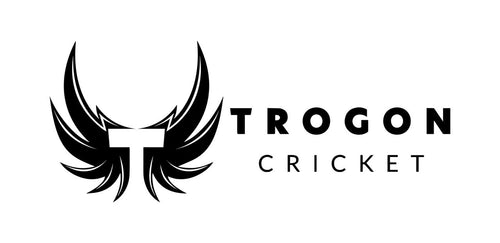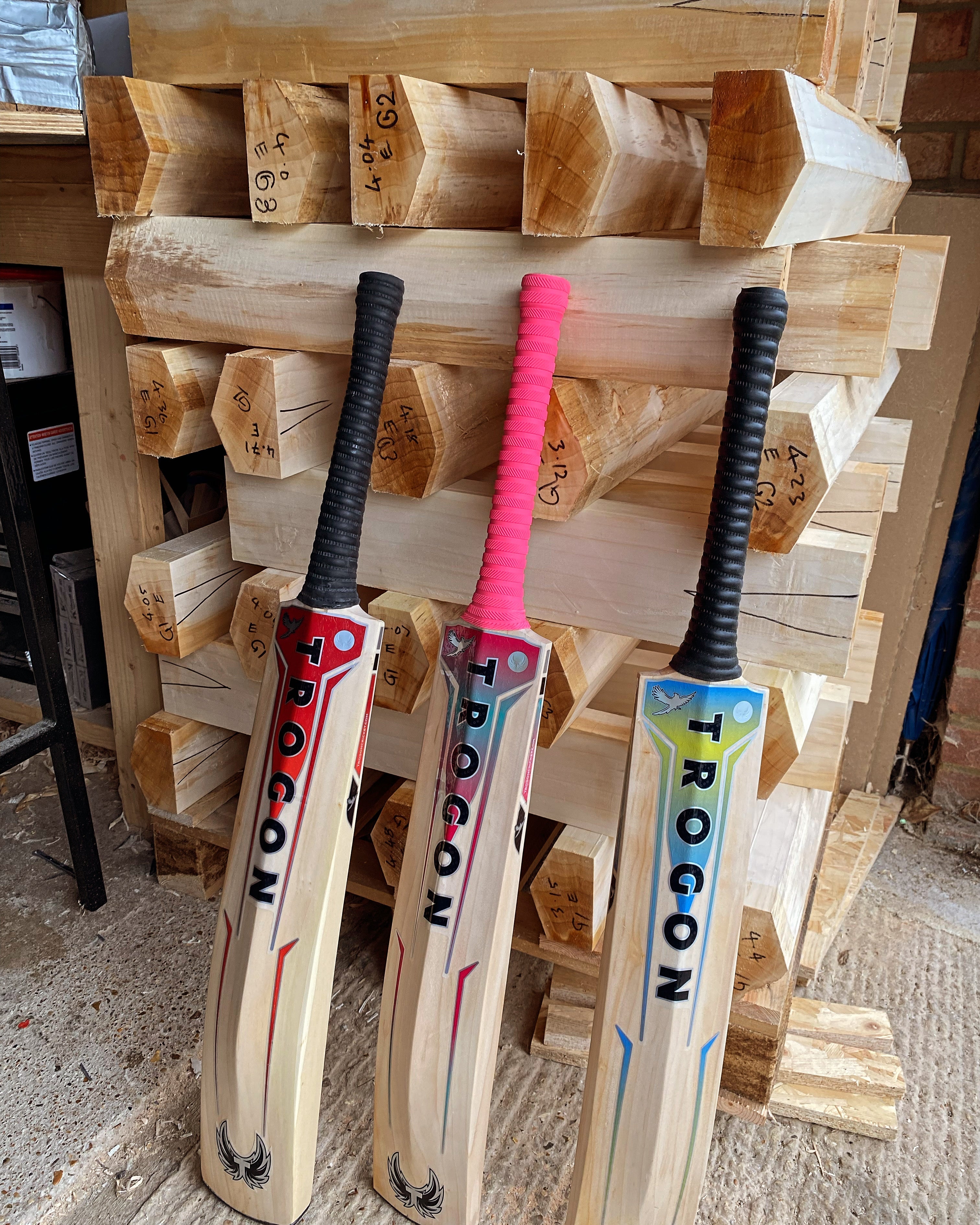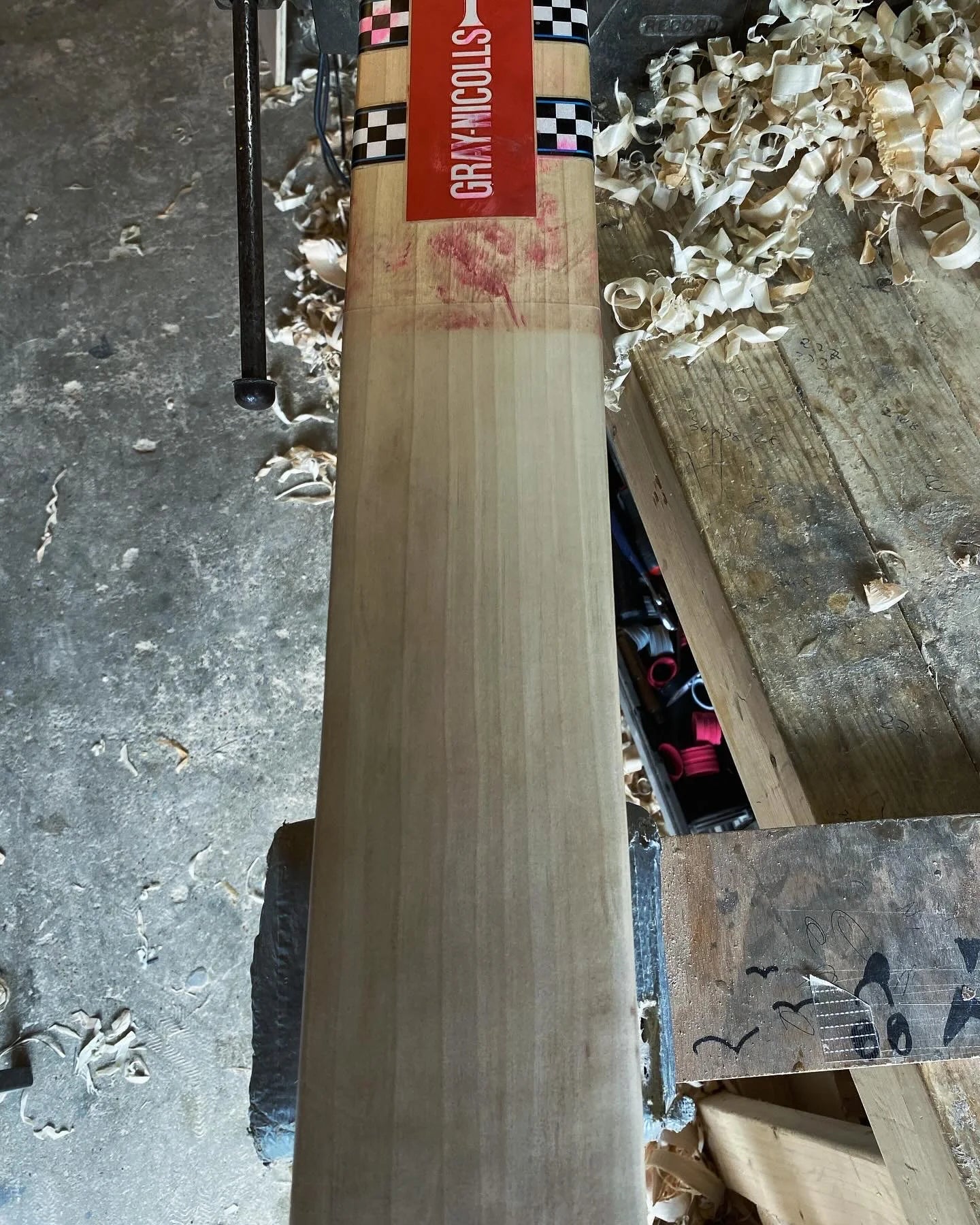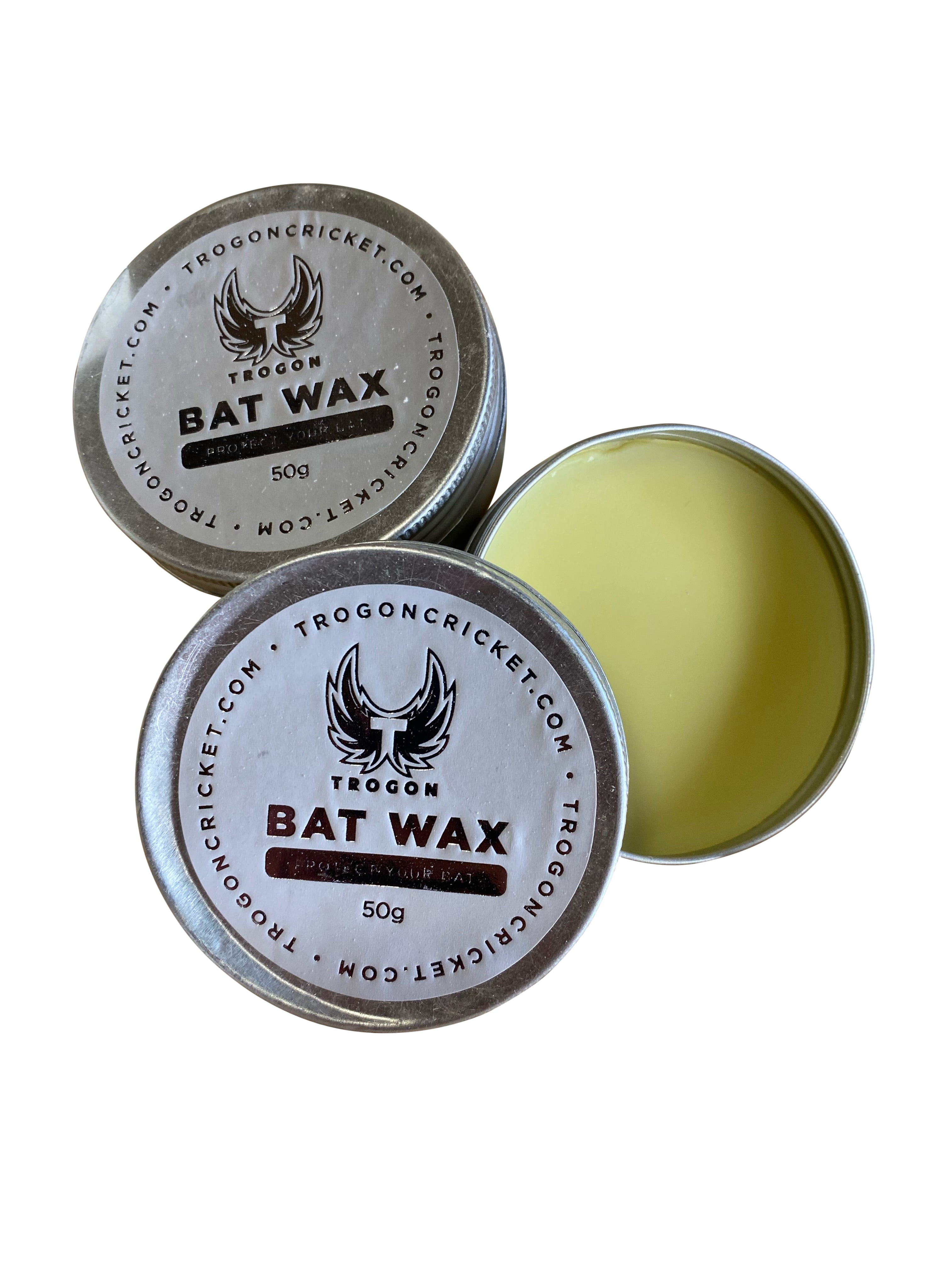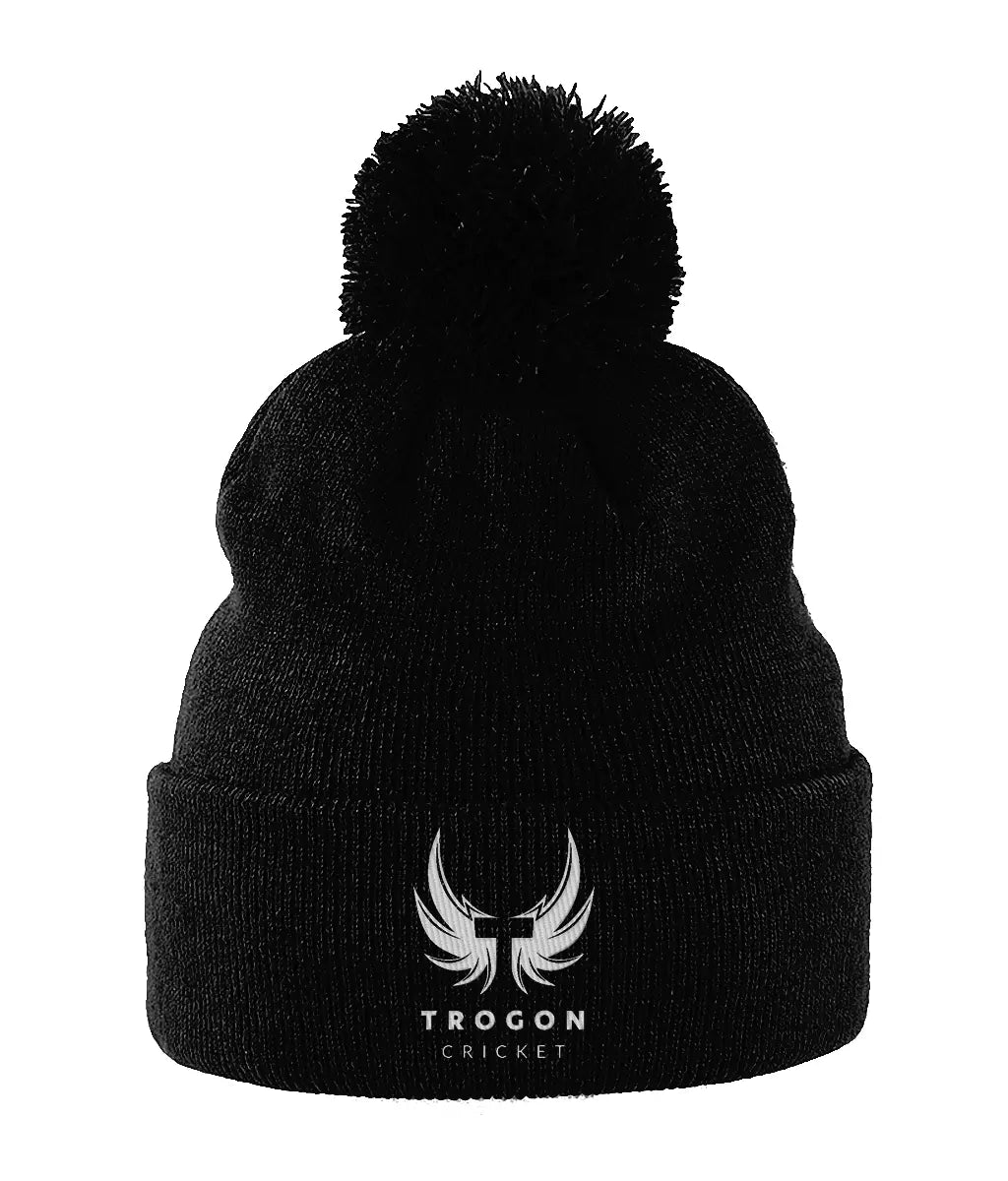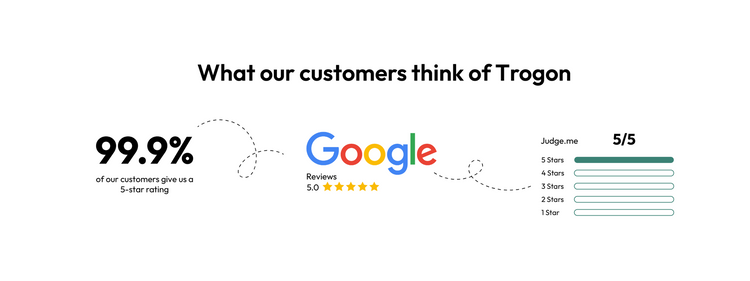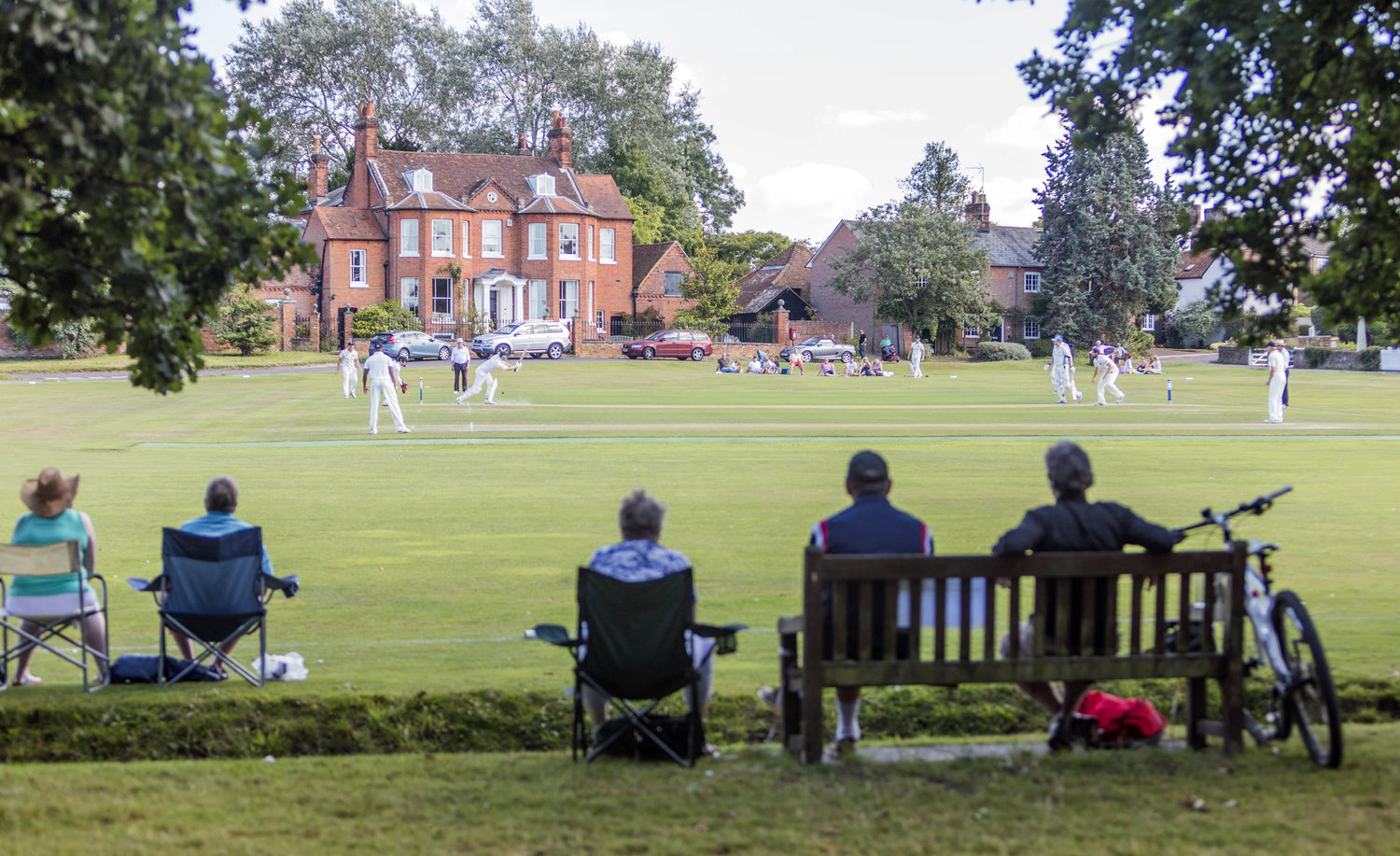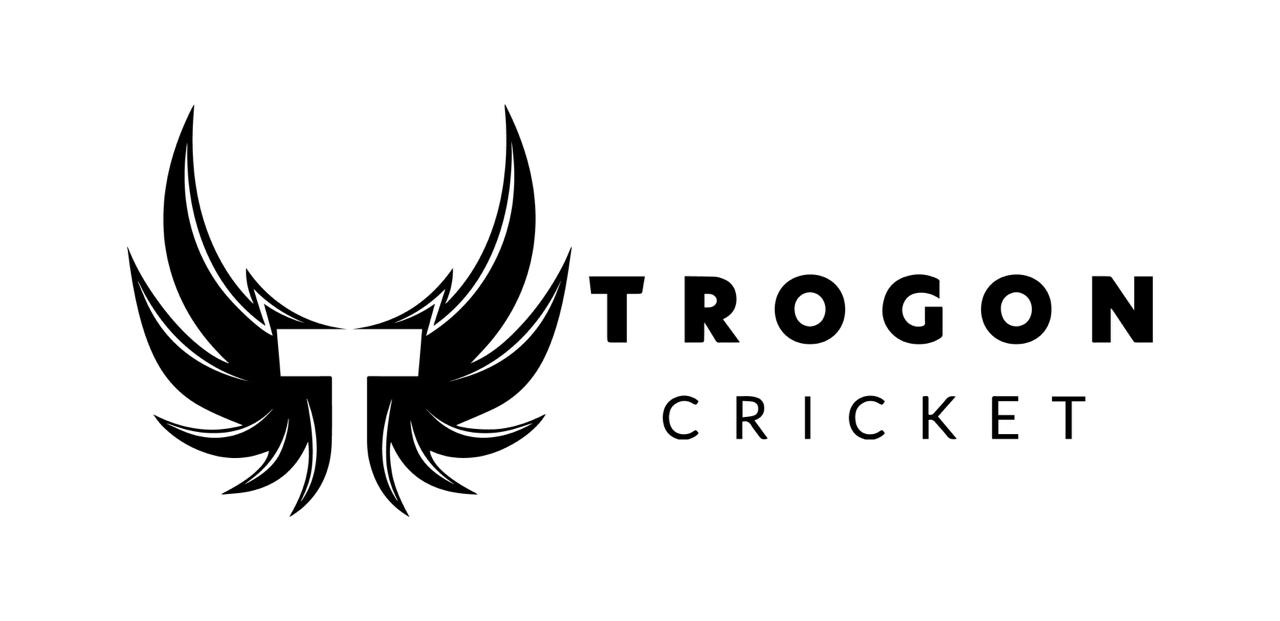As a small business owner and fervent lover of the great game of cricket (some would call me a cricket enthusiast), I've always been intrigued by the evolution of the cricket bat, that essential piece of willow that has been at the heart of numerous unforgettable cricketing moments around the world.
While most see it merely as a tool to score runs, I see it as an artefact, telling tales of cricketers past, from Tendulkar scoring his hundred at Lord's to Brian Lara’s 400 in Antigua. The tales of cricket players and their bats live long in a cricket badger's memory.
But how have cricket bats changed in the last 100 years?
Over the past century, bats have undergone significant transformations in both form and function.
Originally made with thin edges and modest profiles, bats from the early 1900s were lightweight and utilitarian in design. As the modern game evolved, with faster bowlers and more aggressive batting, designs shifted.
By the 1980s, curved bat faces, thicker edges, and bulkier profiles became standard. Bat handles, too, developed from solid willow to laminated cane handles reinforced with rubber for better shock absorption and pickup.
If you are interested in the story of cricket bats, keep reading and get all the details.
From Humble Beginnings: The Early Days
Cricket, with its origins in southeast England during the 16th century, saw cricket bats that were starkly different from today's designs.
Early bats resembled hockey sticks and were primarily used to hit the ball along the ground. This shape made sense when underarm bowling was the dominant method.
Bats were originally made from a single piece of willow or ash, and were used until the 1830s. But as bowling techniques advanced and balls travelled faster, bats started breaking more frequently.
To combat this, makers began “splicing” separate handles into the blade, often using cane or laminated wood, allowing bats to flex more under pressure and absorb shock more effectively - I’m sure we have all hit the ball and felt the shock waves through our hands, imagine that happening without the modern day handles we currently use!
The evolution of cricket bats in these formative years was closely tied to the evolution of the game itself. When Thomas White walked out with a bat as wide as the stumps in 1771, it prompted the formalisation of width restrictions, limiting bat width to 4.25 inches, a law still enforced today.
The 20th Century: Personalisation Comes into Play
With cricket becoming a global phenomenon in the 20th century, and with the explosion of televised matches, T20 leagues, franchise cricket, and massive sponsorship deals, players began to demand more from their bats. Performance and personal preference became paramount, and professional players knew exactly what they wanted from a bat, from the performance to the middle position, weight and balance.
This was the era when the creation of custom cricket bats truly began to flourish. Sir Donald Bradman famously used a narrower, slightly heavier bat tailored to his quick footwork and precision. The legendary Sir Vivian Richards wielded a robust, heavy bat weighing around 2lb 10oz, ideal for his powerful strokeplay and smashing the best bowlers all around the park.
Modern cricketers, too, have continued this trend, seeking bats that reflect their unique playing style while maximising comfort and power. All you need to do is look at these world-class batters batting, and you'll see lots of different shapes, designs, middle positions, toe shapes, and, of course, each will have its own weight and pick-up preferences.
Traditional vs Modern Bat Designs
As the pace of the game increased, bat design had to evolve in step. Traditional bat-making focused on long-term durability and a balanced pickup. Today, it’s about maximising ping, power, and sweet spot size, even if that comes at the cost of a shorter lifespan.
Modern bats are noticeably heavier and thicker than their historical counterparts. This reflects a shift in priorities: the modern batter often prefers a bat that can clear boundaries even on a mis-hit. The increased edge size (now capped at 40mm by MCC regulations) allows for more forgiveness on imperfect shots, something unheard of 100 years ago.
All you need to do is watch the IPL, Big Bash or the Hundred to see mis-hits and edges fly to over the boundary for 6 to know that these bats are different.
Old-School Craft Meets New-Age Tools
Although the fundamental art of bat-making hasn’t changed, starting with seasoned English willow clefts and handcrafted shaping, technology is now deeply integrated into the process.
CNC machines, CAD design tools, laser guides, and moisture metres are now common in professional workshops (ours included).
These tools provide a level of precision and consistency that complements traditional craftsmanship.
Still, there’s no substitute for a bat maker’s intuition: understanding how a cleft behaves, how much to shave from the toe, and where the balance needs to sit in the hands, these are the foundations of bat making and take years to hone.
The use of all the said above machines usually takes off the bulk of the wood, leaving a guide to the finished shape that the bat maker still completes, so the art of bat making isn’t dead, nowhere near.
What Are Cricket Bats Made Of — And Why?
Cricket bats are almost exclusively made from willow, specifically English willow (Salix alba caerulea) or Kashmir willow. Professionals and most cricketers prefer English willow because of its exceptional combination of lightness, power, and shock absorption; however, English willow is becoming more and more expensive, so alternative willows are springing up.
Its diffuse-porous cell structure enables it to rebound on impact, giving that satisfying “ping” while cushioning the batter’s hands. Willow’s moisture content, softness, and ability to compress under impact make it irreplaceable. That’s why even with all the advances in bat design, English willow remains king.
Kashmir willow (alternative willow) is denser and slightly heavier, but more affordable. It’s ideal for casual and club players, and continues to rise in popularity in Asia and parts of Europe.
The other notable alternative willows are Dutch Willow, Serbian and Canadian, which all make good cricket bats.
The MCC's Stance: Rules and the Reasoning Behind Them
While the individuality and customisation of cricket bats have been an intrinsic part of the game's history, it's essential to understand that specific guidelines bound this evolution.
The Marylebone Cricket Club (MCC), cricket's traditional custodian, has always been proactive in ensuring that the game maintains its balance between bat and ball.
Historical Context: In the early days of cricket, there were few strict regulations governing bat dimensions. This was evident in the 1771 incident when a batsman named Thomas White brought out a bat as wide as the wicket, leading to an immediate change in the rules!
Modern Regulations: The recent surge in high-scoring games, particularly in shorter formats, has drawn attention to the increasing size of cricket bats.
Edges became thicker, and the overall depth of bats increased, offering batters an undeniable advantage. Bowlers and purists argued that this upset the game's delicate balance.
In response, the MCC introduced new regulations in 2017. As per the current guidelines:
- The edge thickness cannot exceed 40mm.
- The overall depth of the bat cannot be more than 67mm.
The Rationale: The primary reason behind these regulations was to maintain a fair contest between bat and ball. While batters should be rewarded for skill and technique, bowlers, too, needed a fighting chance, particularly in an era dominated by batter-friendly pitches and boundary-laden spectacles.
The new rules aimed to ensure that mis-hits wouldn't easily sail over the boundary and that genuine skill, rather than just the bat's size, played a decisive role in a player's success.
These regulations, coupled with the evolution of cricket bats, offer a fascinating insight into the game's adaptability. The MCC, while embracing change, ensures that the sport's integrity remains undiluted.
However, it's worth noting that even with these changes to the laws regarding bats, the primary method of determining if a bat meets these laws is by using a bat gauge, as shown in the image below.

It is worth noting that even though the edge side is 40mm at a 107mm bat width, reducing the bat width to 105mm or 104mm can increase the edge size to 44mm, allowing it to still fit perfectly through the gauge.
I know a couple of professional international batters who use bats with 44mm edges and 105mm width; these are household names, and it's working perfectly for them.
The Craftsmanship: Influential Bat Makers in Cricket History
Behind every great bat, there’s a master craftsman, or sometimes, a family of them. Makers like Grey-Nicolls, Gunn & Moore, Slazenger, and Kookaburra, among others, have shaped bats for generations of players.
From Duncan Fearnley’s work with Botham to contemporary bat artists who operate on Instagram and YouTube, the bat-making world continues to blend heritage and innovation. And let’s not forget the smaller, boutique makers, many of whom are producing bats every bit as good as the big names. Have you ever heard of Trogon Cricket?
For instance, Sachin Tendulkar, cricket's highest run-scorer, was known for his specific requirements. His bat was made to precise specifications, ensuring a lightweight feel but with a powerful punch and it had only 5-6 grains - a reflection of his batting style.
The Art Continues: Custom Bats in Today's Game
Today, bespoke bat-making is thriving, not declining. In fact, many pro players go through multiple bats per season, fine-tuned to the specific conditions of each match. Google Steve Smith bats, and see a video of him counting the number of bats he takes on holiday with him, it’s pretty incredible.
Others obsess over ping, profile shape, and grain count, with some preferring wide grains for immediate power and others opting for narrow grains. As with everything, cricket bats are subjective to what the batter using the bat wants.
Customisation extends to grip texture, handle string bindings, handle shape and size, toe shapes, the list is endless, and the options are numerous.
At Trogon, we follow this same ethos. We don’t just make cricket bats; we make them to reflect your playing style, your goals, and your love for the game. Every bat we make is personal, from our stock cricket bats to our customised cricket bats; they are all made with the same care, love and attention to detail.
Players, from club cricketers to international stars, seek that perfect piece of willow, crafted to amplify their strengths. Here at Trogon, we strive to do the same.
Steve Smith's bat, with its distinctive large "duckbill" toe, or David Warner's Kaboom, with its massive profile, are modern examples of how personalised bats define a player's style, even today. At Trogon Cricket, we embrace history and put a modern twist on all our bats.
But what does the future of cricket bats look like? Let’s delve into what we think could be around the corner;
Peering into the Crystal Ball: The Future of Cricket Bats
The next 10 to 20 years could bring some fascinating changes to the world of cricket bats. With the dramatic launch of AI and the possibilities that could yield to build the perfect cricket bat based on individual features, such as height, weight, arm length and others, the development of, and designs of cricket bats could change dramatically from the standard size 3, 4, 5, 6 and harrow, maybe the future is not limited to these sizes and standardised dimensions.
Other areas that could influence the design and development of cricket bats;
-
3D-printed bats tailored to a player’s biomechanics
-
Smart bats embedded with sensors for real-time performance feedback
-
Alternative materials blended with willow to enhance durability without compromising performance
These innovations are closer than many think, and we are excited to be a part of this development and the future of cricket bat making.
The Environmental Angle: Climate Change and Sustainability
Climate change is already affecting the way willow trees grow. Warmer, wetter summers in the UK have led to faster growth cycles. This results in clefts with fewer grains in the ‘older trees’, which some believe affects performance, though many players now challenge that assumption.
While traditional wisdom held that more grains meant a better bat, modern evidence shows that fewer grains, when prepared correctly, can perform just as well and, in more instances (if looked after well), can last longer.
There’s also a sustainability challenge: if trees are felled sooner, they must be replanted sooner, too. Responsible sourcing, like that practised by JS Wright & Sons and English Willow, is key to ensuring the future of English willow for the next generation.
There is also the growth of the planting market, with the exponential growth of the game in Southeast Asia, the demand for English Willow trees has never been greater, and that is set to continue. More and more land owners are turning to planting Cricket bat trees as a long-term investment.
You only need to have watched Season three of Clarkson's Farm to see him planting these trees as an investment opportunity. If you have the right boggy land, then you can make money from planting.
Global Market Trends and Regional Differences
As cricket’s popularity explodes in Asia, so too does the demand for high-quality bats. In India, Pakistan, and Bangladesh, bats are often made from locally sourced Kashmir willow, offering affordability and adaptability to local pitch conditions.
In contrast, English and Australian players typically prefer English willow with mid-to-high middles, suited to bouncier tracks. Even brands like Grey-Nicolls and Kookaburra now tailor their ranges for specific regional markets, because no two cricketing nations play quite the same way.
Bat Lifespan and Why Old Doesn’t Always Mean Useless
A well-used cricket bat can outperform a brand-new one if it's looked after. Knocking in, regular oiling, avoiding excess moisture, and occasional sanding or refurbishing all play a role in extending a bat’s life.
There’s no strict expiration date. Some bats thrive for over 2500 runs or 2–3 seasons, while others may degrade sooner if neglected - especially if they are stored in a cold, damp garage in the off-season, which is a sure-fire way of ruining a cricket bat.
Are Cricket Bats Heavier Today?
Absolutely. Where players once favoured featherlight bats, today’s pros are more than happy to wield bats weighing 2lb 10oz or more, especially in limited overs formats. Thanks to superior core balance and improved pressing techniques, heavier bats still feel light in the hands but deliver a decisive blow.
Viv Richards’ bat, for example, weighed around 2lb 10oz, a weight that’s still considered “standard” by modern T20 sluggers.
Why Do Bats Have Grains — and What Do They Mean?
The lines you see on the face of a bat (called “grains”) represent each year of growth in the willow tree.
More grains typically suggest the tree grew slowly, potentially resulting in softer, more responsive willow. However, many elite players now prefer bats with fewer grains, believing they offer greater durability and “open up” more effectively over time.
Again, as with everything cricket bat-related, the grain count and structure are very subjective, and all players have their thoughts and comments on them.
Quick Recap: 10 Things You Should Know About the Evolution of Cricket Bats
-
Cricket bats started life as hockey-stick-shaped tools
Early bats were made from one-piece willow or ash and were designed for underarm bowling, which dominated in the 16th and 17th centuries. -
The 1830s introduced the spliced handle.
Bat makers began reinforcing blades with separate cane or ash handles to reduce breakages and improve performance. -
Bat design evolved with the game.
Thicker edges, larger sweet spots, and curved faces emerged in the 20th century to match faster bowling and power-hitting. -
MCC laws help maintain bat-ball balance
Modern rules limit edge thickness and bat depth to ensure mis-hits don’t always end up in the stands (although they still do). -
English willow is the wood of choice for pros.
Lightweight, strong, and naturally shock-absorbent, English willow delivers the best “ping” and responsive feel at the crease. -
Kashmir willow offers a durable alternative.
Especially popular in Asia, Kashmir willow is heavier but more affordable and perfect for casual or club-level play. -
Grains tell a story—but don’t tell the whole story
More grains usually mean an older tree and a softer feel, but bats with fewer grains can still perform just as well. -
Customisation is the new normal.
From toe profiles to grip texture, modern batters obsess over every detail, just like we do at Trogon. -
Bat tech is evolving fast.
From CNC shaping to smart sensors, technology is transforming the way cricket bats are made and how players improve. -
The future depends on sustainability.
Climate change is speeding up willow growth, but long-term success depends on responsible sourcing and replanting.
In Conclusion
The cricket bat is not just a piece of equipment; it's a testament to the game's rich heritage, the battles fought in the middle, and the players' undying passion. As a business owner passionate about this legacy, I invite you not just to buy a bat, but to own a piece of history, crafted especially for you.
In a game where every run counts, ensure your bat does too. Embrace the tradition, revel in the craftsmanship, and let your custom-made bat be a reflection of your love for the game and your ambition to excel.
Playing Our Part in Your Cricket Story
We know that cricket is more than just a game; it’s a passion, a community, and a lifetime of memories. That’s why every Trogon bat is made with care, dedication, and pride. We see our role as more than just bat makers; we’re part of your cricket journey.
From the first knock in the nets to the biggest innings of your career, we want to be there with you.
Choosing Trogon means choosing a bat made with honesty, integrity, and the same love for the game that you carry to the crease.

Trogon Product Guarantee
When you buy from Trogon, you’re covered by our 6-month bat guarantee. If your bat cracks or breaks within that period and has been knocked in correctly, we’ll replace it with a new one, simple, fast, and hassle-free. Combine that with your statutory online protections, and you can shop with total peace of mind.
